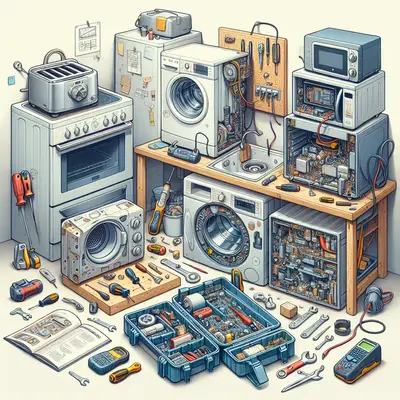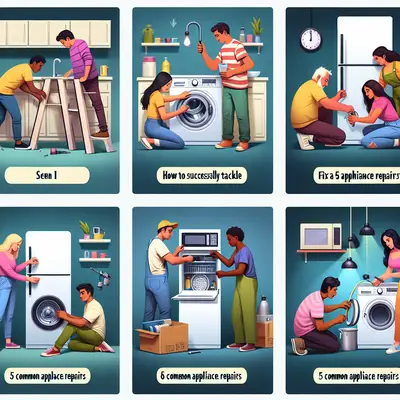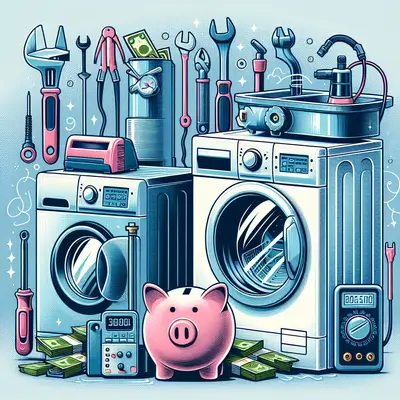Step 1: Dealing with a Refrigerator That's Not Cooling
A refrigerator that's not cooling could be due to simple reasons like a blocked air vent or complex ones like a faulty thermostat. Start by checking the temperature setting and clearing the air vents if blocked. If the problem persists, it might be time to check the condenser coils located at the back of the fridge. If they are covered in dust, use a vacuum cleaner or a soft brush to clean them. Remember to unplug the fridge before you start.
Step 2: Fixing a Dishwasher That Won't Drain
Ensure that the kitchen sink drain is not clogged as it could prevent the dishwasher from draining. If the sink drain is clear, check the dishwasher drain hose and the drain pump for blockages. Disconnect the drain hose from the pump and use a straightened wire hanger to remove any obstructions.
Step 3: Restoring a Microwave That Won't Heat
Microwaves that won't heat are usually due to a faulty high voltage diode or magnetron. To diagnose which part is faulty, you'll need a multi-meter. If you're unfamiliar with how to use one, consider seeking professional help. However, if you're comfortable using one, you can test the diode first, and if it's working, then move on to the magnetron. Remember, microwaves contain high voltage even when unplugged, so proceed with caution.
Step 4: Repairing a Washing Machine That Won't Spin
A washing machine that won't spin could be due to a worn-out drive belt or a faulty lid switch. To check the drive belt, you'll need to remove the back panel of the machine. If the belt is worn out or broken, replace it. If the belt is okay, check the lid switch. It should click when you close the lid. If it doesn't, it needs replacing.
Step 5: Troubleshooting a Dryer That Won't Start
If your dryer won't start, it could be due to a blown thermal fuse. To check, you'll need to unplug the dryer, disconnect the exhaust hose, and remove the back panel. The thermal fuse is a white plastic component with two wires attached. Use a multimeter to check if it has continuity. If it doesn't, replace it.
Conclusion
While these tips can help you troubleshoot and fix common appliance problems, always remember to prioritize safety. Unplug any appliance before starting any repair work and if you're unsure about anything, seek professional help. Happy fixing!



